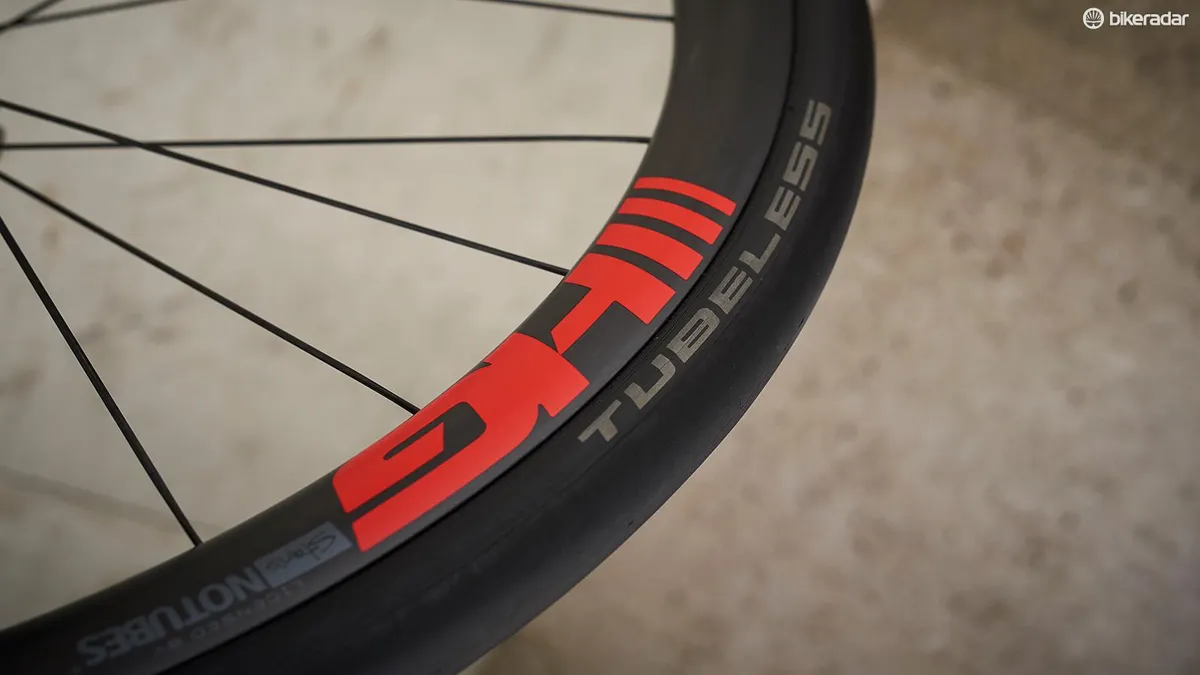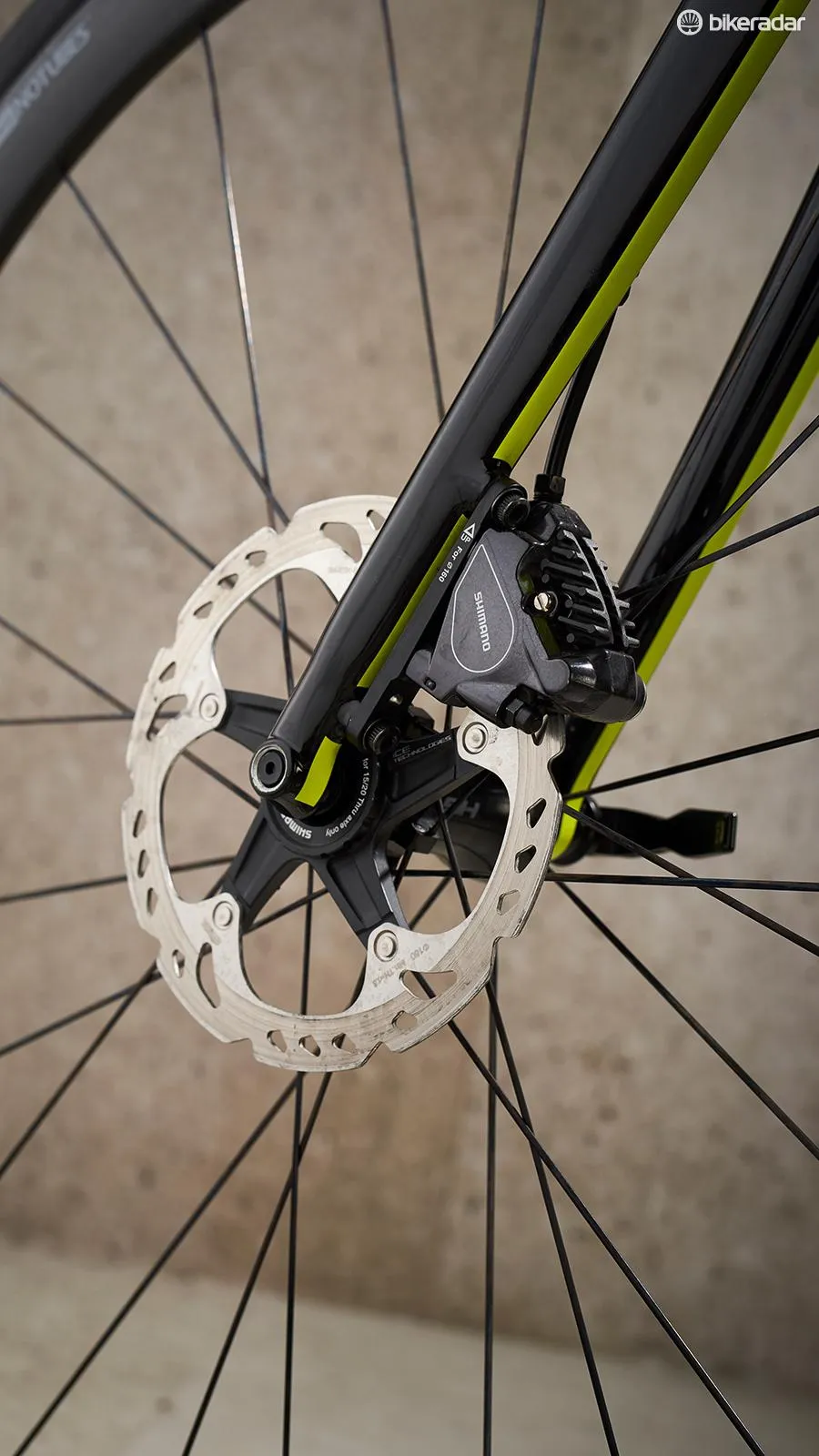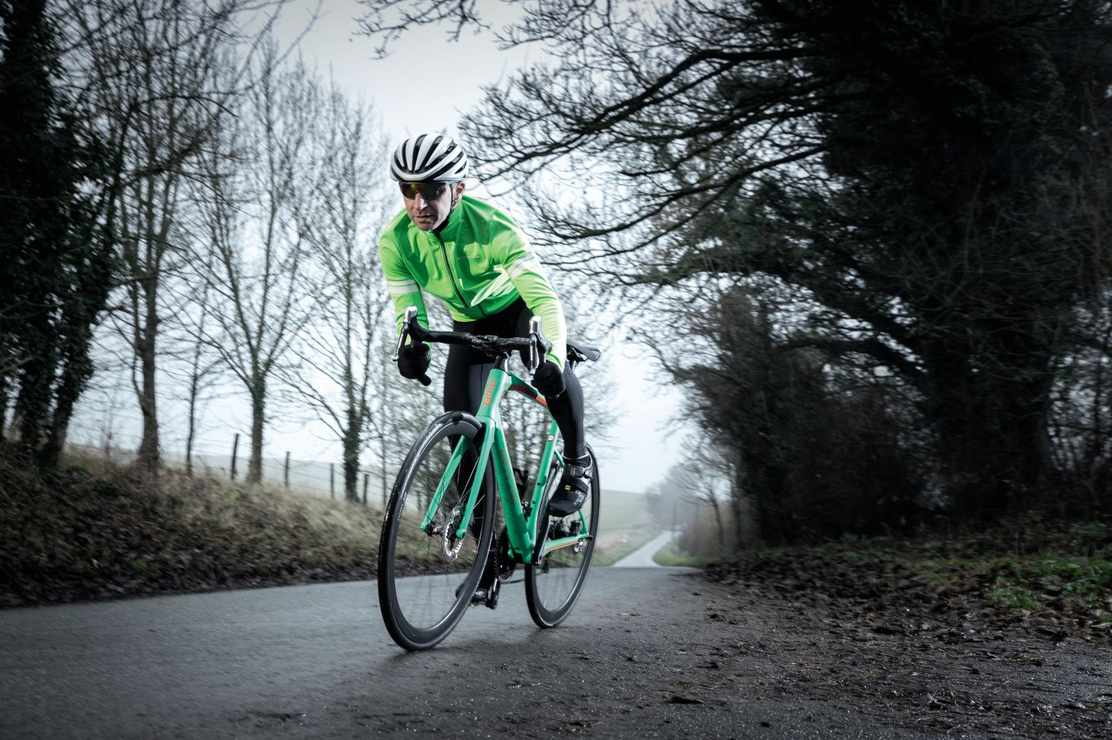Apart from shifting the brake calipers from rim edge to dropouts, there’s little to distinguish the SuperSix Evo Disc frameset’s profile from its SuperSix Evo cousin. But Cannondale didn’t just tweak the existing frame, it went through a total redesign resulting in a 56cm frameset weight of 1,189g, just 92g more than the rim-braked model.
- Best road bike: how to choose the right one for you
- Bike of the Year 2017: Canyon Endurace AL 6.0 wins Budget Road Bike of the Year
An equivalent rim-braked SuperSix Evo HM bike can weigh up to half a kilogram less than this bike’s 7.61kg, but that’s pretty light for discs, and feels even lighter from the saddle, as the additional weight from the brake calipers, rotors, Di2 derailleur motors and battery is all around hub height, and doesn’t directly affect rotational mass.
Cannondale’s Hollowgram Si wheelset does affect rotational mass, and the 25mm external, 19mm internal and 35mm tall carbon rims come with Stan’s No Tubes rim tape. They’re an ideal extension of the Evo Disc’s historical attributes, and, even with inner tubes, the Schwalbe One tubeless tyres feel racy.

Cannondale used the most subtle truncated aero profiles for the major wind-facing tubes, to reduce drag without compromising stiffness and compliance. Some rear end compliance has been sacrificed in the redesign, relying more on the slim 25.4mm carbon seatpost and Delta-Tube seat-tube for vibration reduction.
Whether racing or not, there’s no excuse not to feel racy aboard this bike
It’s hard to notice, especially when the 25mm tyres inflate to a plump 28mm. At 85psi, the Evo Disc rides corrugated tarmac with such composure that I had to remind myself it’s a race bike, not an endurance model.
The relationship between wheels and frameset is more crucial due to the importance of disc brake alignment. The fork’s continuous carbon fibre construction gives ultimate strength to weight, with a thru-axle managing the 160mm rotor’s braking forces.
Cannondale decided on a quick-release rear wheel, citing hub weight savings and faster in-race wheel swaps as the reasons. Weight transfer under braking means less force can be applied through the rear brake, and performance was never less than excellent, with no evidence of rub in any situation.
Whether racing or not, there’s no excuse not to feel racy aboard this bike, as its ability to cruise and cosset, or hammer and carve are equally accessible.
Shimano’s Ultegra Di2 looks classy and swiftly snicks between gears, and the stiff Hollowgram Si crank with one-piece 52/36 SpideRing ups the quality quotient.

Cannondale’s mid-range aluminium bar and stem are decent, and the slim carbon post topped by a Fizik Arione saddle is a tried and trusted combination. If weight is a consideration, Di2 comes with a penalty, and there are small savings to be made on finishing kit.
The wheels are stiff, agile and stable in winds, and you could make them tubeless, saving rotational weight while improving ride quality and rolling resistance.
Functionally, there’s nothing I’d change about the bike, but aesthetically, the wheel release levers protrude 25mm from the frame.
The nod toward aero tube shaping is an example of not wishing to dilute the Evo’s ethos as a true all-rounder that can climb, descend, conquer technical turns and float along with incredible speed.



